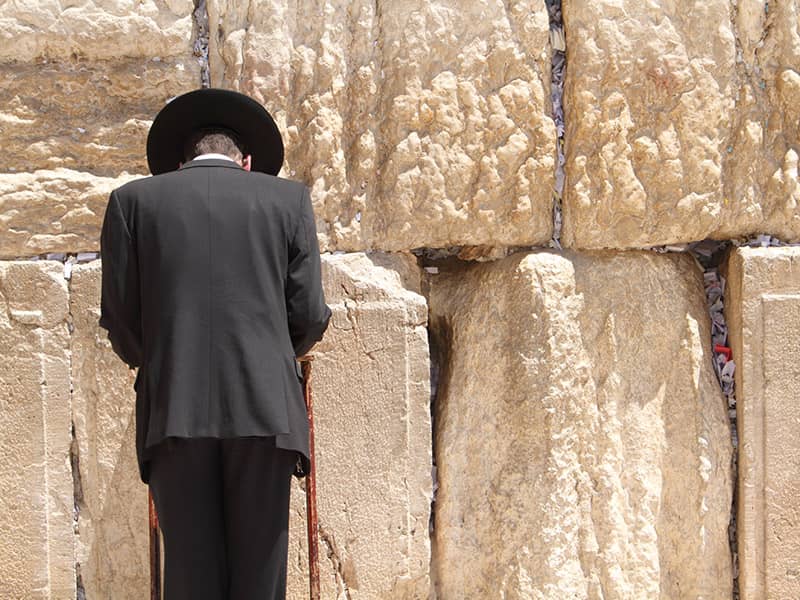This article was originally published October 5, 2000.
I remember very clearly building my first Sukkah because it came at such a sad time in my life. It was 15 years ago, the fall after I'd lost a child not long after he was born. My daughter was 5, and she came home from Sunday school full of enthusiasm about Sukkot. That's the holiday where you build a wooden harvest hut, a Sukkah. She asked me if we were going to have a Sukkah. I said yes.
We were living in Baton Rouge at the time, and Southern Sukkah-building had its own hazards. I remember the mosquitoes nipping at my ankles. While clearing the bamboo and brush in my backyard, I was bitten on the lip by a bee, and it swelled up to large proportions.
Nature in Louisiana is fierce--hot sun, strong winds, mammoth clouds, giant mosquitoes--but the skhakh (roof of the Sukkah) was glorious: I used droopy rich green banana leaves, stiff palmetto fans all set on top of hand-cut bamboo poles, which I tied with vines to the rickety Sukkah frame.
I am far from being a carpenter and had no clue how to build a sturdy Sukkah. The only instruction I had was The First Jewish Catalog, which mentioned that a Sukkah could be in the shape of any of the three Hebrew letters that make up the word "Sukkah": a samech, a Kof, or a heh, that is, a square, a three-sided structure, or a two-and-a-half-walled hut. (I love the intense "lettrism" of Jewish thinking!) A building shaped like one of the letters that spells its name is a mysterious kind of writing: using wood, nails, vines, and the natural overgrowth of my backyard to make a statement of joy.
It was a time of sadness for me and my wife, and here of all things I was building an outdoor hut for the Festival of Joy while my daughter was making crayon drawings and chains of colored paper with which to decorate our structure. We also were learning Sukkah Tech 101: how to tie apples and crooked squashes and hang them from the roof.
Later, much later, I would learn the Zen of power-drilling fruits and vegetables and running string through them, but in those days we practically had to reinvent macramé to string up a few recalcitrant pears and apples. There they suspended and rotted at the bottom over the next few days--but the bees, flies, and mosquitoes loved them.
We sat in the Sukkah. We blessed the Sukkah. The Sukkah shook in the wind--my carpentry skills guaranteed it. We ate our meals in the Sukkah. And gradually, we started coming to it in the afternoons. My wife and I talked in the Sukkah, and held each other, and took long walks in the late afternoon sun of autumn, and came back again to the Sukkah for sunset, and moonlight, and deep night. We sat at a round table made from an old cable core (a wooden wheel around which cable is wound) with lit candles and macaroni and cheese and wine, and blessed.
It was good in a time of loss to be open to the wind and even the rain, to be open to the hard light of the sun and the quizzical light of the moon. One night, a storm blew the whole Sukkah down, but I quickly rebuilt it.
And we welcomed guests in the Sukkah, the ushpizin, the invisible guests whom Jews traditionally invite into their Sukkahs. We welcomed Abraham and Isaac and Jacob, all the "seven shepherds" of the prayer book. And we asked them to dwell with us in the Sukkah. And we welcomed all those we had lost, our grandparents, my mother. And we welcomed our son, our invisible guest, though he was already there, dwelling with us in our hearts. And we didn't know it then, because we were just beginners in the way of the Sukkah, but the symbol of the Sukkah itself is the heart--known in the Kabbalistic language of the sefirot (God's attributes) as tiferet--the place of compassion and the place of beauty. We didn't know it at that time in that language of Kabbalah, but we knew it in our own experience, because when the days of Sukkot were over, some healing of the heart had begun.

